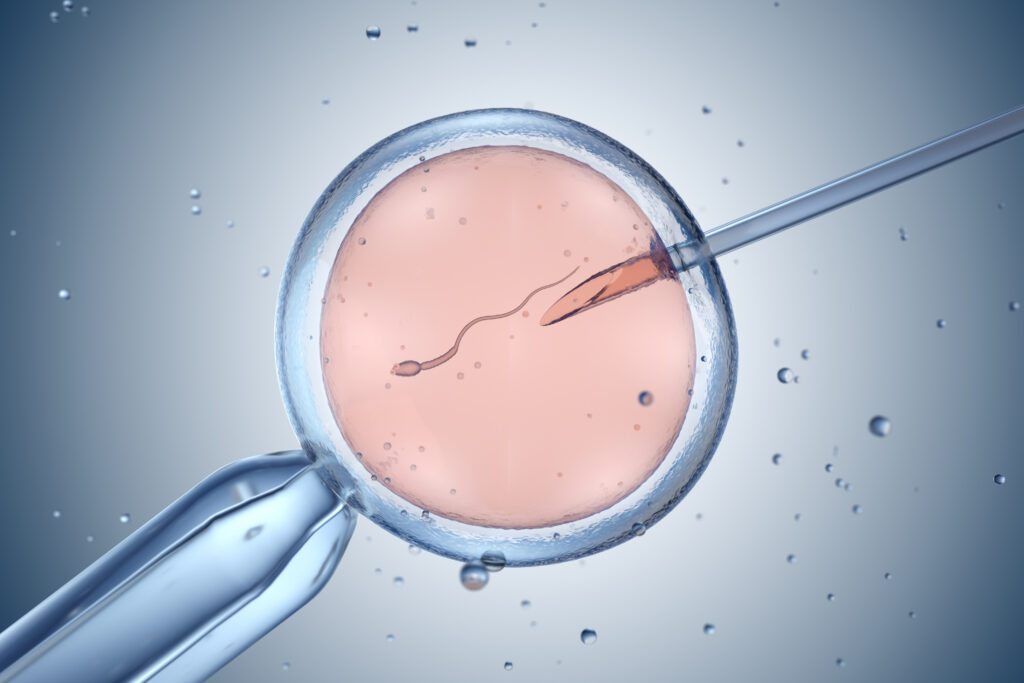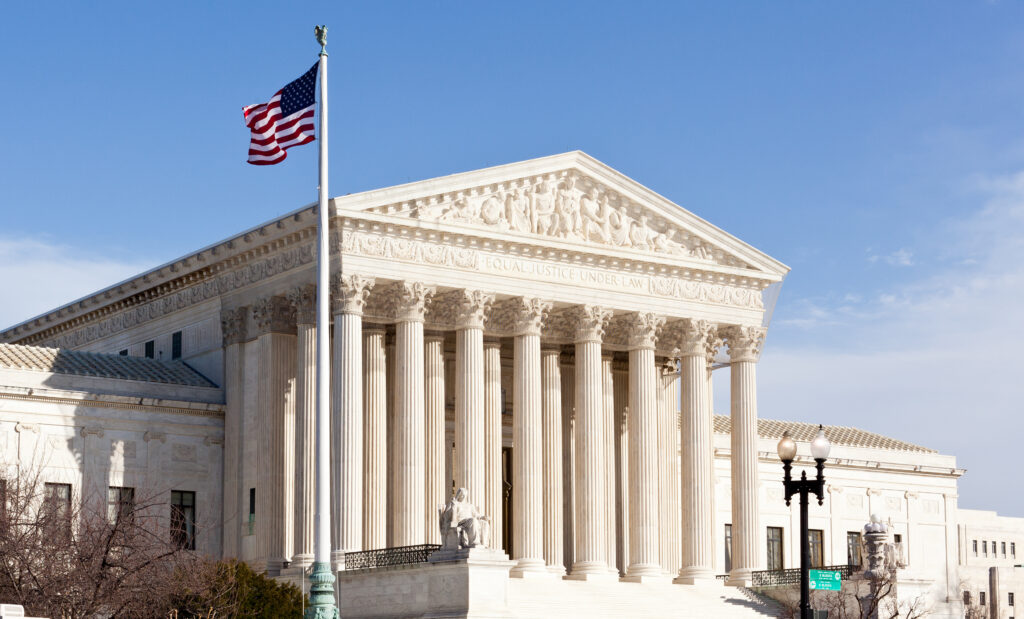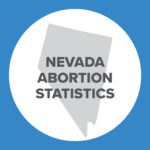Anti-Discrimination Laws in the Womb: New Momentum for Protection
This is Issue 36 of the On Point Series.
Something interesting is afoot in recent disappointments for advocates of the right to life. In a series of cases that may test the appeal of a new jurisprudence on abortion, two federal appeals courts and the Supreme Court itself have turned aside attempts to enact a law banning disability discrimination abortions. The term “disability discrimination” is being applied by legislatures to abortions undertaken for classic reasons found in civil rights laws in such areas as employment and housing; that is, abortions sought because of the unborn child’s race, sex, or disability. The news is that despite losing in these early rounds of debates, right to life advocates are scoring points in the legal realm, and perhaps even in the realm of public opinion.
A case from Indiana was the first to garner widespread attention. In March 2016 then-Gov. Mike Pence signed into law HEA 1337, a bill that added a broadly phrased ban on discrimination abortions to the Indiana code. The law [1] made abortion an illegal act whenever it was being sought solely “because of the fetus’s race, color, national origin, ancestry, sex, or diagnosis or potential diagnosis of the fetus having Down syndrome or any other disability.” The law was immediately challenged by Planned Parenthood in a case named Box v. Planned Parenthood of Indiana and Kentucky. Christina Box was the health commissioner of Indiana and PPINK is the joint affiliate of the Planned Parenthood Federation of America in these two Midwestern states.
The law was enjoined by the federal district court for the Southern District of Indiana. The district court concluded [2] that “[t]he challenged anti-discrimination provisions directly contravene well-established law that precludes a state from prohibiting a woman from electing to terminate a pregnancy prior to fetal viability.”
That ruling was appealed to the Seventh Circuit Court of Appeals and the Supreme Court. And while the anti-discrimination provisions have not been upheld to date, judges writing in dissent regarding these provisions began to raise a spate of intriguing arguments based on the history and practice of eugenics in the United States. In April 2018, a three-judge panel of the Seventh Circuit upheld the district court’s decision, ruling unanimously with regard to the discriminatory abortion ban and 2-1 against the humane disposition of fetal remains provision. While agreeing that the court was bound by the Planned Parenthood v. Casey ruling of the Supreme Court and thus compelled to strike down the anti-discrimination law, Judge Manion praised [3] Indiana’s intent in writing the law and conjectured that it could be upheld even under a strict scrutiny standard, had not the Casey ruling foreclosed that option. Judge Manion wrote:
“The non-discrimination provisions are narrowly tailored to target invidious discrimination against people whom nobody would deny would be members of protected classes were they allowed to be born. Surely, Indiana has a compelling interest in attempting to prevent this type of private eugenics. And the prohibitions would not affect the vast majority of women who choose to have an abortion without respect to the race, sex, or disability of the unborn child.”
The next step in the course of judicial review of the Indiana law came two months later when the Seventh Circuit rejected a request by Indiana for review by the full circuit court (what lawyers call “en banc” review) of just the fetal remains portion of the three-judge panel ruling. The decision not to rehear the case en banc resulted from a tie vote of the participating members of the Seventh Circuit, which was occasioned by one judge recusing himself from the case after the initial vote on the matter in early June 2018. The decision on June 25, 2018 reinstated the initial Seventh Circuit panel’s ruling, but interestingly enough it led to the publication of a dissent from the denial of rehearing en banc written by Judge Frank Easterbrook and joined by Circuit Judges Diane Sykes, Amy Coney Barrett, and Michael Brennan.
The Easterbrook dissent [4] makes the plain case that the Casey decision did not face and therefore did not resolve the question whether eugenic abortions are protected by the U.S. Constitution.
“Casey and other decisions hold that, until a fetus is viable, a woman is entitled to decide whether to bear a child. But there is a difference between ‘I don’t want a child’ and ‘I want a child, but only a male’ or ‘I only want a child whose genes predict success in life.’ Using abortion to pursue eugenic goals is morally and prudentially debatable on grounds different from those that underlay the statutes Casey considered.”
The implication, Easterbrook argues, is that Indiana’s rationales for banning discriminatory abortions present an issue the U.S. Supreme Court has not resolved – a case of first impression. He states:
“None of the Court’s abortion decisions holds that states are powerless to prevent abortions designed to choose the sex, race, or other attributes of children.”
It is becoming scientifically possible, he notes, to control some aspects of the child’s genetic makeup, and society does regulate the use of the attendant technologies that might be used this way in the reproductive context. As a result, he asks:
“Does the Constitution supply a right to evade regulation by choosing a child’s genetic makeup after conception, aborting any fetus whose genes show a likelihood that the child will be short, or nearsighted, or intellectually average, or lack perfect pitch – or be the “wrong” sex or race? Casey did not address that question. We ought not impute to the Justices decisions they have not made about questions they have not faced.”
Easterbrook analogized the situation to the Court’s history of carving out exceptions to at-will employment law when employers fired individuals based on their race, sex, or disability. In short, the issues presented by Indiana’s discrimination abortion ban are new issues closely linked to trends in legislative and judicial decision-making about arbitrary actions adverse to vulnerable minorities.
Indiana subsequently exercised its right to appeal the Seventh Circuit’s ruling to the U.S. Supreme Court by filing a writ of certiorari. Filing an amicus brief [5] supporting the petition, Susan B. Anthony List called on the Court, should it decline to accept the petition, to make clear at least that the issue of disability discrimination abortions is a matter not previously addressed by the Court in its rulings on abortion. The brief stated: “[I]f the Court denies review of the Down syndrome protections at issue in this case, lower courts and future litigants would nevertheless greatly benefit from an accompanying statement clarifying that whether the U.S. Constitution bars such protections presents a question of first impression under the abortion precedents of this Court.”
The Court responded to Indiana in May 2019, upholding the state’s human fetal disposition law and deferring decision on the discrimination abortion ban. The Court explained that it was following its “ordinary practice” of denying petitions that raise legal issues not yet considered by additional Courts of Appeals.
However, Justice Clarence Thomas, while concurring in the Court’s disposition of the petition, elected to write separately, in an extraordinary opinion exploring the historical question of the relationship between eugenics and abortion. Justice Thomas’s 20-page review [6] of one of the ugliest chapters in American history deserves to be read in full. He does not accuse every champion of legal abortion of engaging in eugenic theory, including the founder of Planned Parenthood, Margaret Sanger, who simultaneously embraced eugenic goals while deploring the violence of abortion and infanticide. However, Thomas goes on to illustrate how Planned Parenthood’s leadership well into the modern era cooperated with the eugenics movement both organizationally and in terms of sharing the goal of eliminating children identified in the womb with genetic abnormalities.
Planned Parenthood’s president from 1962-1974, Alan F. Guttmacher, M.D., was also a Vice President [7] of the American Eugenics Society. His name adorns the most prominent organization in the country that conducts research advocacy for legal abortion, the Guttmacher Institute. Like one modern European leader [8] of Planned Parenthood, having a close association with the cause of eugenics provided grounds for advancement in the hierarchy of the movement. Today, of course, the advent of an array of prenatal genetic screening and testing, interacting with the trepidation and dismay parents naturally feel when given word that a child they expect is facing a probable disability, produces eugenic results without the visible advocacy that ran rampant in the early 20th century. “Indeed,” Justice Thomas write, “the individualized nature of abortion gives it even more eugenic potential than birth control, which simply reduces the chance of conceiving any child.” [emphasis in original]
Thomas labeled abortion “an act rife with the potential for eugenic manipulation.” He concluded:
“Enshrining a constitutional right to an abortion based solely on the race, sex, or disability of an unborn child, as Planned Parenthood advocates, would constitutionalize the views of the 20th-century eugenics movement. In other contexts, the Court has been zealous in vindicating the rights of people even potentially subjected to race, sex, and disabiliy discrimination.”
Thomas characterized the Supreme Court’s demurral to consideration of the discrimination abortion ban as an opportunity for “percolation” of the issue among the states and in the appeals courts considering the weighty issues at stake. The latest perc occurred last week with a decision [9] by a panel of the Sixth Circuit Court of Appeals striking down Ohio’s ban on abortion of children identified as or suspected of having Down syndrome.
In language similar to that employed by the federal district court in the Indiana case, Judge Timothy Black struck down the law in March 2018. Black wrote that the Supreme Court has made it clear that “a State may not prohibit any woman from making the ultimate decision to terminate her pregnancy before viability.” On October 11, 2019, the Sixth Circuit panel upheld Judge Black’s ruling 2-1. Once again, a dissenting judge, Alice Moore Batchelder, concluded [10] that the Supreme Court had not specifically addressed the core issue raised by the statute – whether a state can lawfully protect the unborn child against an abortion based on an invidious classification life sex, race, or disability.
Batchelder wrote:
“Ohio enacted the Antidiscrimination Law, H.B. 214, to counteract such eugenicist practices concerning the prenatal Down Syndrome population. The law prevents a physician from performing an abortion when the physician knows the abortion is sought not because the woman did not intend to become pregnant, but because the child in the woman’s womb tested positive for Down Syndrome. Ohio concluded that permitting physicians to become witting accomplices to the deliberate targeting of Down Syndrome babies would undermine the principle that the Down Syndrome population is equal in value and dignity to the rest of Ohio’s population, and would do deep damage to the integrity of the medical profession.”
Judge Batchelder notes that the Gonzales court specifically permitted the upholding of a statute (the partial-birth abortion ban) whose terms applied both pre- and post-viability, and that one of the grounds for doing so was the damage that the gruesome partial-birth abortion technique inflicted on the reputation of the medical profession. Considering an abortion justifiable that takes the life of a human being simply because of the presence, or suspected presence, of a disability can be similarly damaging to the reputation of the healing profession.
Americans have sometimes been asked to register their opinion on the permissibility or morality of abortions in the case of fetal defect or disability. The language of these polling questions undoubtedly has significant impact on the responses, as do our changing mores and laws respecting disability generally, and specifically Down syndrome, where the truth about expanding prospects for these children, and the positive effect so many of them have on their families and society, continues to spread.
In May 2018 the Gallup organization [11] asked respondents whether they would favor making abortions illegal “when the child would be born mentally disabled.” By 56 to 41 percent respondents would keep abortion legal in that instance. However, when the question was limited specifically to a child being born with Down syndrome, the respondents split almost equally, with 49 percent favoring legal abortion and 48 percent supporting making it illegal. When Gallup asked in that same survey about aborting a child in the third trimester of pregnancy when Down syndrome has been detected, respondents opposed making that procedure legal by a margin of 68 to 29 percent.
More encouragingly, the annual Marist Poll commissioned by the Knights of Columbus found that 62 percent of Americans oppose abortions of unborn children identified with Down syndrome. The result echoed a finding in the 2018 Marist Poll [12] that six in 10 Americans believe “it is morally wrong to abort a child based on an expectation that the baby will be born with a genetic disorder such as Down syndrome.” The poll found that 49 percent of self-described “pro-choice” Americans also hold that it is morally wrong to abort a baby under such circumstances. Note that differences in poll wording – a finding of moral wrongness as opposed to making an act illegal – can contribute to differences in outcome.
Overall, it is clear that there is substantial public sentiment in favor of protecting children with Down syndrome from being aborted based on genetic testing. The remediability of many of the attendant physical problems associated with Down syndrome, persistent positive media attention to such programs as Special Olympics and the achievements of men and women with Down syndrome, and the available of positive social supports have fostered new attitudes about this condition. Despite this fact, there are a number of nations where abortion is responsible for the near-eradication of people with Down syndrome – a curious cure that does not alleviate the condition but destroys those who have it in the womb.
The course of the law in 21st century America has been to broaden categorical protection of individuals perceived as vulnerable to prejudice and discrimination at the hand of more powerful majorities. The Americans with Disabilities Act became law nearly three decades ago. It offers strong protections against discrimination in employment, housing, public and private accommodations open to the public, and transportation. The law led to the modification of millions of business entrances, sidewalks, and streets, and telecommunications that were previously fraught with obstacles to equal opportunity. As we approach the third decade of the 21stcentury, among the barriers that remain to the disabled is the practice of abortion on the very threshold of life.
For these reasons and more, the new interest being shown in legislatures and the courts in extending classic civil rights protections to the unborn child may prove to be an irresistible force. The eugenic legacy of today’s legal obstacles to such protections are a factor that may well hasten their final collapse.
Charles A. Donovan is the President of the Charlotte Lozier Institute.
[1]Engrossed House Bill No. 1337 (2016). Retrieved from https://static.votesmart.org/static/billtext/55793.pdf
[2]Planned Parenthood of Indiana and Kentucky Inc., Dr. Marshall Levine, M.D., v. Commissioner, Indiana State Department of Health in his official capacity, et al. (2016). Retrieved from https://ecf.insd.uscourts.gov/cgi-bin/show_public_doc?12016cv0763-61
[3]Planned Parenthood of Indiana and Kentucky, Inc. v. Commissioner of the Indiana State Department of Health, No. 17-3163 (7th Cir. 2018). (2018). Retrieved from https://law.justia.com/cases/federal/appellate-courts/ca7/17-3163/17-3163-2018-04-19.html
[4]Planned Parenthood of Indiana and Kentucky, Inc. v. Commissioner of the Indiana State Department of Health, No. 17-3163 (7th Cir. 2018). (2018). Retrieved from https://www.documentcloud.org/documents/5680962-Easterbrook-Dissent-Planned-Parenthood-v.html
[5]Kristina Box, Commissioner, Indiana Department of Health, et al., v. Planned Parenthood Of Indiana And Kentucky, Inc., et al. (2018). Retrieved from https://www.supremecourt.gov/DocketPDF/18/18 483/72199/20181115131408012_18-483%20Amicus%20Brief–PDFA.pdf
[6]Kristina Box, Commissioner, Indiana Department of Health, et al., v. Planned Parenthood Of Indiana And Kentucky, Inc., et al. (2019). Retrieved from https://www.supremecourt.gov/opinions/18pdf/18-483_3d9g.pdf
[7]Ibid.
[8]Angela Franks. Hans Harmsen, Sanger’s Racist Friend. (2016). Retrieved from https://www.angelafranks.com/margaret-sanger-and-planned-parenthood/2016/11/14/hans-harmsen-sangers-racist-friend
[9]Hellmann, Jessie (2019). The Hill. Appeals court blocks Ohio Down syndrome abortion ban. Retrieved from https://thehill.com/policy/healthcare/465461-appeals-court-blocks-ohio-down-syndrome-abortion-ban
[10]Preterm-Cleveland et alv. Himes et al. (2018). Retrieved from http://www.opn.ca6.uscourts.gov/opinions.pdf/19a0264p-06.pdf
[11]Abortion. (2018). Retrieved from https://news.gallup.com/poll/1576/abortion.aspx
[12]Americans’ Opinions on Abortion. (2018). Retrieved from https://www.kofc.org/un/en/resources/communications/abortion-limits-favored.pdf


























